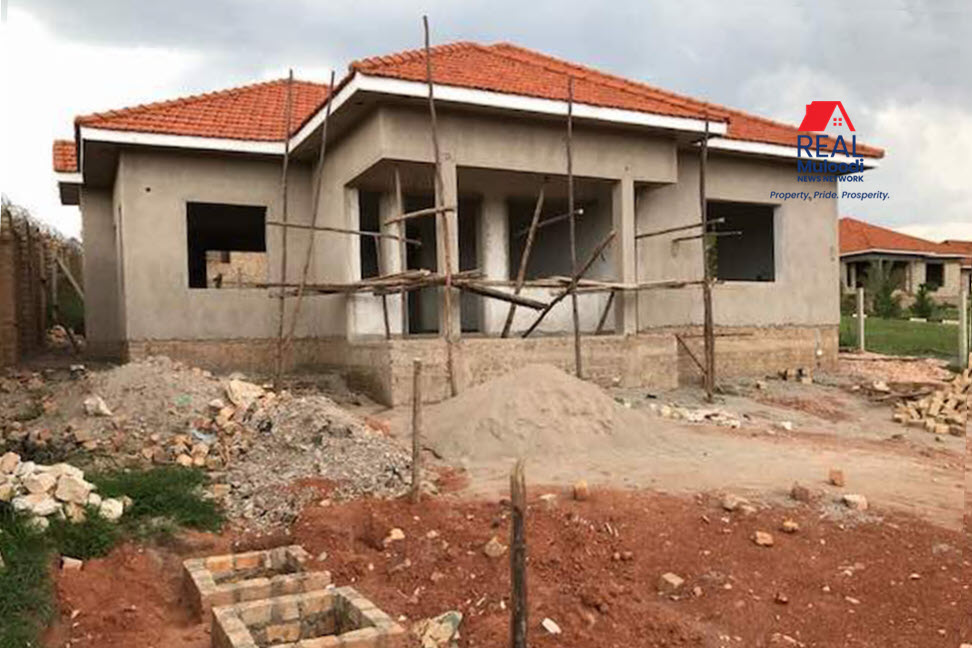UGANDA, Kampala | Real Muloodi News | Michael Jjoga, a resident of Wakiso District did not qualify for a bank loan, so he adopted an incremental approach to building his home. He purchased a bag of cement every time he earned some money from his welding business, and slowly he constructed his two-roomed house brick by brick on a piece of land he cleared himself.
Next to the completed home, a half-finished house awaits a roof made of iron sheets. Nearby there is a dilapidated hut made from thatch and earth that used to be his house, that now serves as a shelter for his goats.
Governments and private developers have not been able to meet the growing demand for housing in Uganda, leading many people like Michael to take matters into their own hands. The brick by brick model involves building homes incrementally over years or even decades, preferring to invest in building materials rather than depositing money into a bank. Often, families move in well before completion of such a home.
Initially, lenders overlooked this brick by brick model, but they eventually realised that a significant portion of microloans intended for businesses were being diverted into housing. As a result, some lenders are now directly targeting this market.
Conventional mortgages are rare in developing countries. According to The Economist, Uganda has only 5,000 mortgages for a population of over 48 million people.
Instead, banks and microlenders offer smaller housing loans that are paid back over shorter periods of 1-3 years. Families may borrow for a cement floor, an extra room, or other home improvements.
However, borrowers often lack land titles to use as collateral. To get around this problem, some microlenders establish de facto ownership through village meetings. Others offer unsecured housing loans to salaried workers, deducting repayments from their paycheques.
Some banks like Centenary Bank in Uganda accept untitled land as security. Robert Canwat, its microfinance manager, explains that attachment to home makes the whole family monitor repayment, and “Everybody becomes your recovery officer.” Most lenders report that housing loans are paid back more reliably than other products in their portfolio.
However, houses built incrementally by local artisans can be shoddy, so some lenders provide technical support, such as sample plans or an engineer’s advice. Others help borrowers buy appliances like solar panels and water filters.
Recently, Habitat for Humanity commissioned evaluations of microfinance products developed with lenders in East Africa, and found that microfinance has proven successful in improving housing conditions. In Uganda, the likelihood that a household had a separate kitchen rose by 22% after taking out a loan. Housing satisfaction improved, and repayment rates were high.
In addition to microlenders, most hardware stores offer different schemes in which Ugandans who lack the financial resources to build their home can deposit money in instalments so that over time, they can save all they need to build their house. For those who don’t have a lot of cash, or whose cash-flow is inconsistent, paying for building materials incrementally ensures they stay focused on building their house.
When Tom Okelloto, a furniture dealer, started building his house a few years ago, he didn’t know how he could possibly raise money he needed for the materials.
Then, a friend told Mr Okelloto about a saving scheme with Hardware World. “After learning about the scheme, I realised that I did not have to have all the money at once to start building my house,” he says.
“I went to Hardware World Ntinda and opened up an account. I was given a form to fill and they took my details. With that account, I keep on depositing small amounts of money for different building materials that I need for the ongoing construction of my house,” he adds.
Mr Okelloto now collects the different building materials which he has been depositing for. He explains that the biggest advantage of this scheme is that he gets the materials at the same price they were when he opened his account. Therefore, he does not have to worry about prices going up.
While brick by brick construction presents many challenges, it has become a necessary option for many people in developing countries like Uganda facing inadequate housing.
READ MORE LIKE THIS:
Part 1: How a Young 26 yr old Average Income Earner Built a USh64m 3-Bedroomed House



